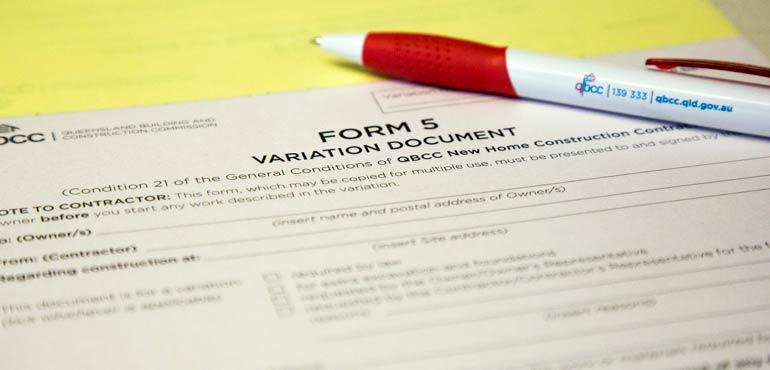Variations are changes that are made to the contract after the contract is signed. This could include changes to the materials used or work performed.
Failure to accurately record variations and have them approved before being implemented is one of the most common causes of serious building disputes. Therefore, it is very important to ensure all variations are properly documented, so everyone is on the same page (and you can keep tabs on your budget). It is essential to store these variation records in the event you need evidence to make a claim.
Get agreed variations in writing
Before the contractor commences any variation work they must present the variation to you in writing either in person, by post or via email—in accordance with any contract provision relating to the service of notices.
The contractor must do this before the first of the following happens:
- the domestic building part of the variation work starts
- five (5) business days from the day both parties agree to the variation.
The only exception is if the variation work is required to be carried out urgently and it is not reasonably practicable, in the circumstances (e.g. safety), to produce a written copy of the variation before carrying out the work.
You must also respond in writing to indicate whether you agree to the variation work.
What a variation document should include
View our variation form template on the domestic building contracts page. Just scroll through the list to see different contract templates and individual forms and schedules relating to each contract type. A variation form template is usually a Form 4 or Form 5 depending on the contract type.
The variation document prepared by your contractor should be easy to read and must include the following details, which you should carefully check:
- description of the variation/s
- date of the request for the variation/s
- if the variation/s will result in a delay affecting the subject work, state the contractor’s reasonable estimate for the period of delay
- state any change to the contract price or the method for calculating the change to the contract price due to the variation/s, including what date the increase is to be paid or the decrease is to be credited.
Impacts to home warranty insurance
If the variation changes the value of the project, the contractor is responsible for amending the home warranty cover, but you may need to sign some documents.
The QBCC will pay any refunds to you or the contractor, depending on your contract arrangements. In some cases, you may need to provide evidence of the premium amount you have paid to the contractor, so a refund can be processed. Learn more about requests to change, cancel or amend cover.
Learn more about requests to change, cancel or amend cover.
Next: Contract issues
